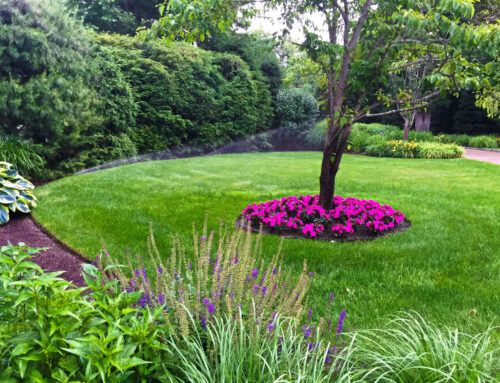It’s easy to get wowed by pretty plants without knowing much about them. Then you wonder: why do they need so much water? Why aren’t they attracting any birds or butterflies? It could be because they’re not from around here.
Plan your landscape using native plants — plants original to your area of the country — and they’ll feel right at home.
And you’ll notice the difference.
Birds, butterflies, and hummingbirds will start flitting around your yard.
You won’t need to water as much. You might not even have to mow.
Let’s take a look at why you should plant native. Then, the fun part — we’ll offer some great suggestions for plants you’ll love that will love you (or at least your landscape) back.
What Are The Benefits Of Native Plants?
Native Plants Provide Food For Wildlife
Natural habitat is disappearing at a scary rate, putting wild creatures at risk. By planting native plants, you help provide food and protective cover for wildlife.
Choose the right native plants, and you’ve created a wildlife garden that offers seeds, nuts and fruits for birds and small mammals, nectar for hummingbirds and butterflies, host plants for butterfly caterpillars.
Natives Keep Invasive Plants Out
Use only native plants in your landscape and you limit the chances that potentially invasive, exotic plant species will sneak into the environment around your home. The spread of invasive, exotic plants poses a threat to native plants and animals around the world. You can do your part in your own corner of the world.
Native Plants Are Low Maintenance
Unlike many non-native plants, native plants are hardy and less susceptible to pests and diseases. They grow well and require little care. By choosing the right native plants, you’ll likely need fewer pesticides and less water.
How Can You Incorporate Natives Into Your Landscape?
Reduce the turf footprint in your New York or Connecticut landscape by planting native species in groupings.
Include vertical layers in the plantings, from the ground up. Include trees, shrubs, perennials, and grasses. Birds and mammals love layers.
Plant in wide groups — it provides better shelter and breeding habitat for native bird species.
Which Plants Are Native To New York And Connecticut?
Here in New York and Connecticut, we’re lucky — we’re blessed with loads of lovely native plantings that can beautify your landscape.
Try wild columbine. Its unique red and yellow flowers attract hummingbirds. New England aster perks up any bed with bright lavender flowers with cheery yellow centers in late summer and early fall. Pink turtlehead offers showy pink flowers from July through September.
Plant a red chokeberry bush for bright red fruit and pinkish-orange fall color. Red osier dogwood offers white flowers in the spring and red twigs and berries in the fall.
Trees, you ask? You bet. Choices abound, including box elder, river birch, flowering dogwood, Eastern red cedar, wild plum or black cherry. Love maples? Red, silver and sugar maple are all native here.
Visit plantnative.org for a great list of choices.
Neave Knows Native
Neave Landscaping has been creating beautiful landscapes for more than 40 years. Our experts have a great handle on all kinds of growing things, including native plants.
Neave’s landscaping professionals will visit your property and discuss your many options, including grasses, perennials, shrubs, and trees. Leave the planting to us, then get ready to enjoy your native plants, knowing you’re giving nature a helping hand.
If you’re in the Hudson Valley, call us at (845) 463-0592. If you’re in Westchester County, call (914) 271-7996; from Connecticut, dial (203) 212-4800. Or, fill out our simple web form, and we’ll contact you about setting up your free consultation.





